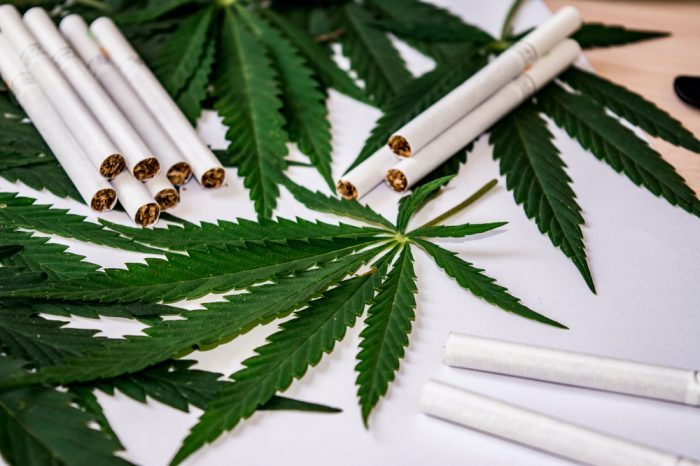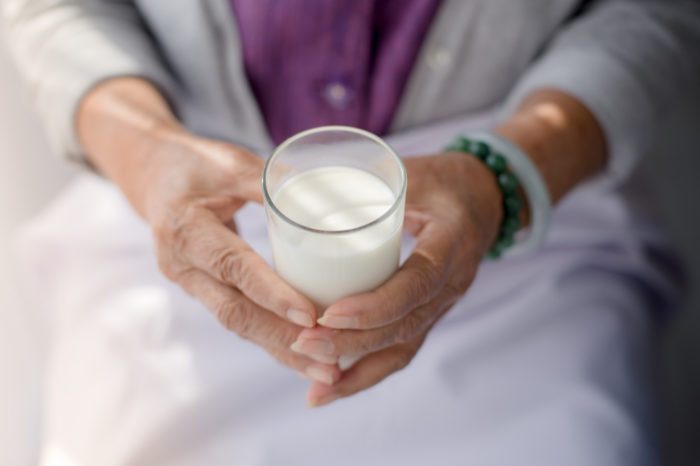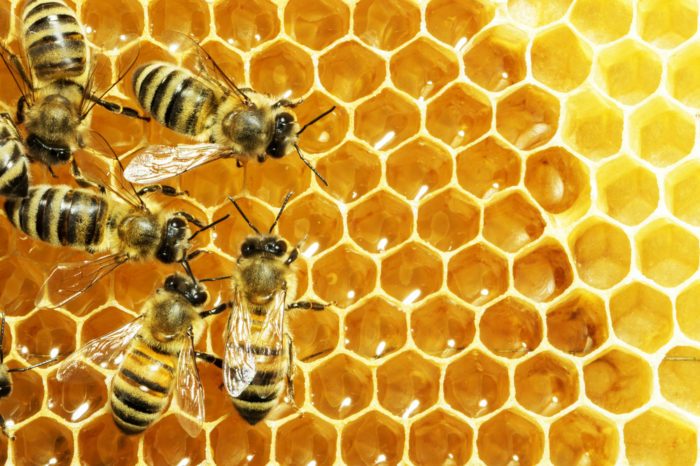A fascinating new study is bringing together hemp and bees.
Hemp production in the U.S. continues to, quite literally, grow year after year. In 2019, there were 511,442 acres of licensed hemp across the country. And at the same time as the hemp expansion, bee colonies across the country are experiencing a rapid and alarming decline. According to Greenpeace, honey bee hives are experiencing a thirty to fifty percent decline.
But at the intersection of these two seemingly unrelated news stories, sits an opportunity. As per a recent study out of Colorado, bees and hemp could be the future. Turns out that bees love hemp flowers. And no, these bees aren’t creating honey from cannabis resin (except potentially in honey by a French beekeeper). Instead, they are using hemp as a stop gap measure to get ready for the winter.
Hemp goes into flower just as most other flowering commercial crops have stopped. So, could hemp help feed struggling bees with a supply of pollen heading into winter?
The Study on Bees and Hemp
In 2019, Biomass and Biology [1]O’Brien, C., & Arathi, H. S. (2019). Bee diversity and abundance on flowers of industrial hemp (Cannabis sativa L.). Biomass and Bioenergy, 122, 331–335. … Continue reading published, “Bee diversity and abundance on flowers of industrial hemp (Cannabis sativa L.).” Scientists took to the fields of Colorado to assess bee diversity and abundance within experimental hemp crops. Using specialized traps set throughout the field, researchers collected samples between August 4th through September 9th, 2019.
Throughout the study, they collected nearly 2,000 bees from twenty-three different bee genera. They also pulled hundreds of other species of insects, some of which are also essential pollinator species. Approximately eighty-six percent of the insects they collected were bees.
Many of the bee species categorized in the study were from ground-nesting and solitary species, but the most common bee collected was the Western Honeybee (Apis mellifera). This bee lives in community hives. Perhaps not surprising as there were active commercial bee operations within the nearby area for use among other crops (sunflowers, canola).
The team had a few theories as to why there was an abundance and wide diversity of tiny pollinators. They wrote, “We hypothesize that the presence of plants that shed large amounts of pollen could be the attractant, in addition to the possibility that the study was conducted in a region where agriculture is intensive, and there may have been fields with sunflowers and cucurbits nearby.” Furthermore, “Hemp begins flowering when other mass flowering crops have completed blooming, making it an excellent pollen resource for bees.”
Why Bees Need Hemp
Until recently, the relationship between bees and hemp crops was relatively unstudied. Hemp flowers represent an opportunity for bees to continue collecting pollen to feed new larvae. This, just as other crops wrap up the flowering cycle. The majority of common commercial crops in the U.S. do not require pollination by insects (relying on wind instead), but that doesn’t mean that bees don’t take advantage of the situation.
Corn is the most common crop in the US, with nearly 90 million acres planted on an annual basis. As such, it is a valuable pollen source for bees (even if it doesn’t require insect-assistance with pollination). But, corn generally finishes flowering by mid-July, leaving massive areas of the mono-cropped country with no flowers, and therefore, no pollen for bees.
Additionally, the U.S. Department of Agriculture reported there were two million acres of canola across America in 2019. Flowering varies from region to region but generally wraps up by early August at the latest.
The authors of the study in Biomass and Biology theorized, “Hemp can thus be an ecologically valuable crop whose flowers are attractive to managed honey bees and a wide range of wild bees. In addition, access to crucial phytochemicals through pollen and nectar from diverse plant sources is important for improved survival and pathogen tolerance in honey bees.”
With the established value of hemp as a pollen source for bees, researchers are investing in the study of nutrient-density. They also want to know if any of the pharmacologically active compounds help these bees fight off pathogens and disease during the long winter months.
The Seasonal Habits of Bees
The majority of U.S. crops that require insect pollination rely on dedicated commercial bee colonies, but there are hundreds of native solitary bee species as well. The following is a summary of the seasonal habits of the Western Honeybee, the most commonly used commercial bee species.
Spring
In the spring, with the warming temperatures, a dormant colony wakes up and seeks early-blooming species of flowers for nectar and pollen. This kick starts colony expansion, where the queen increases drone and egg production, and the colony’s population explodes.
Summer
When midsummer temperatures are hottest, the hive population is pushing the limits of its space, building new combs, producing more beeswax, and laying more eggs. The colony may swarm, spawning new colonies.
Following a swarm, the remaining bees get busy preparing for winter, even though it is still mid-summer. They focus their efforts on the collection of as much nectar and pollen as possible. They also put honey away for the long winter months. It’s at this stage where hemp may provide a significant boost to their collection efforts.
Fall
Just as honeybees are turning their attention towards food storage, hemp is coming into full bloom. Considering hemp flowers well into fall, a hemp field could offer the honeybee a final big boost of pollen. Pollen doesn’t go into the production of honey (the winter food source for bees), but it does go directly to feeding larvae. Even if hemp is naturally nectar-poor, it could help bees boost colony numbers before the winter months.
Hemp is One Part of the Solution for Bee Population Decline
While hemp won’t solve the crisis of the great bee die off, it offers a bridge between the end of commercial crop flowering and the winter. Bees still need a viable source of nectar in August, September, and October. Commercial crops don’t facilitate this.
But, hemp offers hope for bees. Combined with other efforts, like those outlined by Federal Pollinator Health Task Force, it provides a piece to the complicated puzzle of pollinator decline.
References








